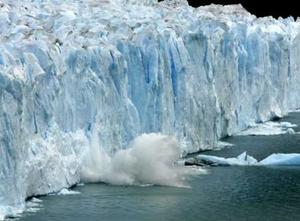Infrastructure protectionMelting ice sheets chief cause of rising sea levels
There are two causes for rising sea levels — melting ice sheets and thermal expansion of warming ocean waters; during the Last Interglacial Period, the former contributed much more to rising sea levels than the latter, a University of Arizona-led team of researchers has found; the results further suggest that ocean levels continue to rise long after warming of the atmosphere levels off

Ice sheets continued melting despite pause in temperature rise // Source: sci.ce.cn
Thermal expansion of seawater contributed only slightly to rising sea levels compared to melting ice sheets during the Last Interglacial Period, a University of Arizona-led team of researchers has found.
The study combined paleoclimate records with computer simulations of atmosphere-ocean interactions and the team’s co-authored paper is accepted for publication in Geophysical Research Letters.
A University of Arizona release reports that as the world’s climate becomes warmer due to increased greenhouse gases in the atmosphere, sea levels are expected to rise by up to three feet by the end of this century.
The question remains, though: How much of that will be due to ice sheets melting as opposed to the oceans’ 332 million cubic miles of water increasing in volume as they warm up?
For the study, UA team members analyzed paleoceanic records of global distribution of sea surface temperatures of the warmest 5,000-year period during the Last Interglacial, a warm period that lasted from 130,000 to 120,000 years ago.
The researchers then compared the data to results of computer-based climate models simulating ocean temperatures during a 200-year snapshot as if taken 125,000 years ago and calculating the contributions from thermal expansion of sea water.
The team found that thermal expansion could have contributed no more than 40 centimeters — less than 1.5 feet — to the rising sea levels during that time, which exceeded today’s level up to eight meters or 26 feet.
At the same time, the paleoclimate data revealed average ocean temperatures that were only about 0.7 degrees Celsius, or 1.3 degrees Fahrenheit, above those of today.
“This means that even small amounts of warming may have committed us to more ice sheet melting than we previously thought. The temperature during that time of high sea levels wasn’t that much warmer than it is today,” said Nicholas McKay, a doctoral student at the UA’s department of geosciences and the paper’s lead author.
McKay pointed out that even if ocean levels rose to similar heights as during the Last Interglacial, they would do so at a rate of up to three feet per century.
“Even though the oceans are absorbing a good deal of the total global warming, the atmosphere is warming faster than the oceans,” McKay added. “Moreover, ocean warming is lagging behind the warming of the atmosphere. The melting of large polar ice sheets lags even farther behind.”
“As a result, even if we stopped greenhouse gas emissions right now, the Earth would keep
